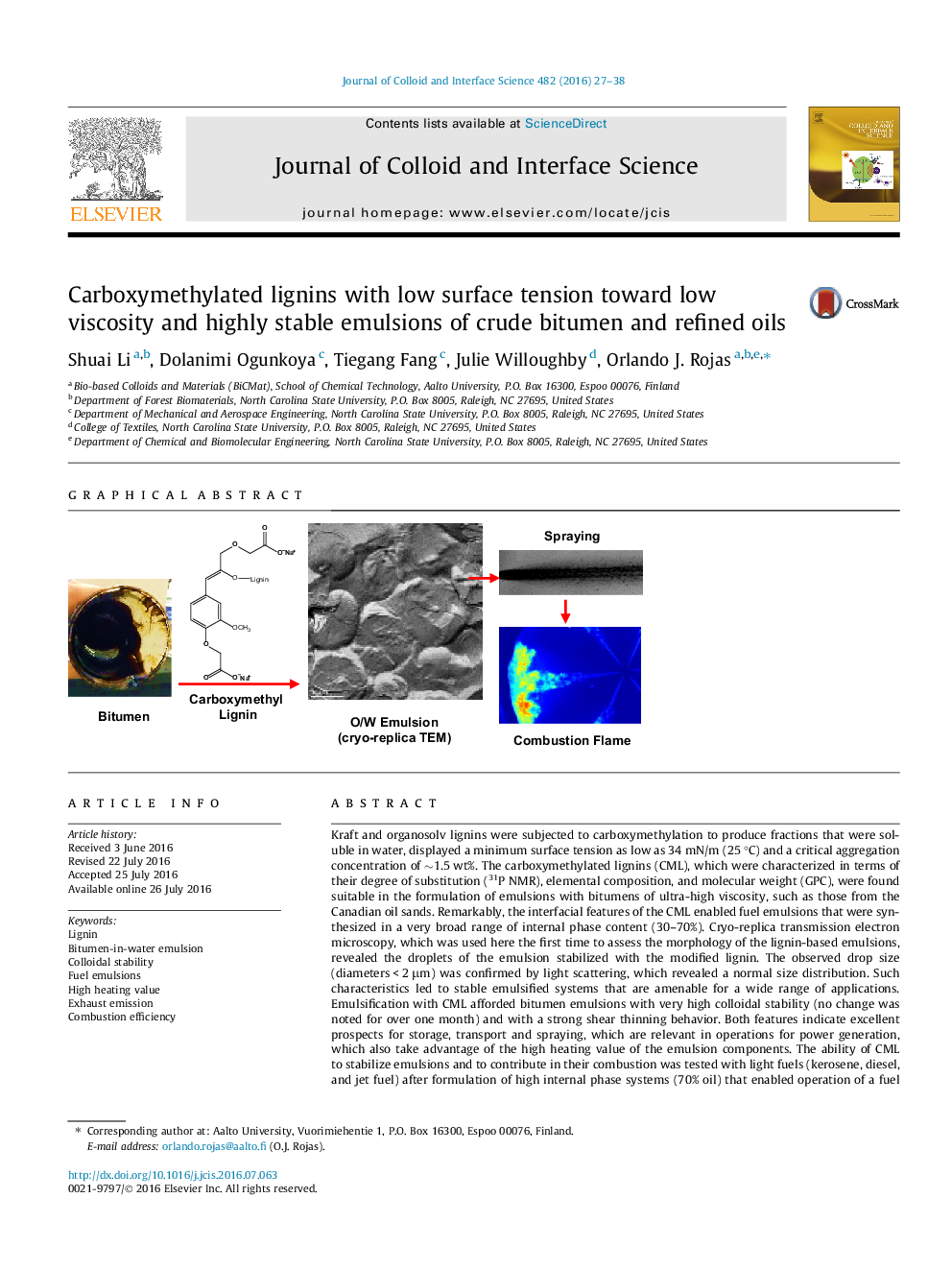| کد مقاله | کد نشریه | سال انتشار | مقاله انگلیسی | نسخه تمام متن |
|---|---|---|---|---|
| 606120 | 1454513 | 2016 | 12 صفحه PDF | دانلود رایگان |
Kraft and organosolv lignins were subjected to carboxymethylation to produce fractions that were soluble in water, displayed a minimum surface tension as low as 34 mN/m (25 °C) and a critical aggregation concentration of ∼1.5 wt%. The carboxymethylated lignins (CML), which were characterized in terms of their degree of substitution (31P NMR), elemental composition, and molecular weight (GPC), were found suitable in the formulation of emulsions with bitumens of ultra-high viscosity, such as those from the Canadian oil sands. Remarkably, the interfacial features of the CML enabled fuel emulsions that were synthesized in a very broad range of internal phase content (30–70%). Cryo-replica transmission electron microscopy, which was used here the first time to assess the morphology of the lignin-based emulsions, revealed the droplets of the emulsion stabilized with the modified lignin. The observed drop size (diameters < 2 μm) was confirmed by light scattering, which revealed a normal size distribution. Such characteristics led to stable emulsified systems that are amenable for a wide range of applications. Emulsification with CML afforded bitumen emulsions with very high colloidal stability (no change was noted for over one month) and with a strong shear thinning behavior. Both features indicate excellent prospects for storage, transport and spraying, which are relevant in operations for power generation, which also take advantage of the high heating value of the emulsion components. The ability of CML to stabilize emulsions and to contribute in their combustion was tested with light fuels (kerosene, diesel, and jet fuel) after formulation of high internal phase systems (70% oil) that enabled operation of a fuel engine. A significant finding is that under certain conditions and compared to the respective pure fuel, combustion of the O/W emulsions stabilized by CML presented lower NOx and CO emissions and maintained a relatively high combustion efficiency. The results highlight the possibilities in high volume application for lignin biomacromolecules.
Figure optionsDownload high-quality image (60 K)Download as PowerPoint slide
Journal: Journal of Colloid and Interface Science - Volume 482, 15 November 2016, Pages 27–38
